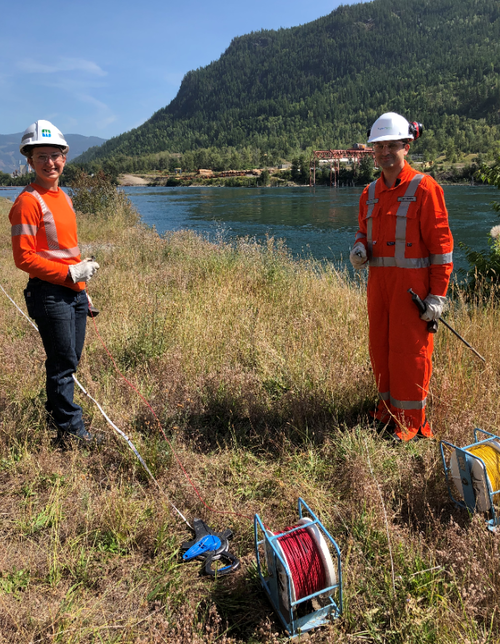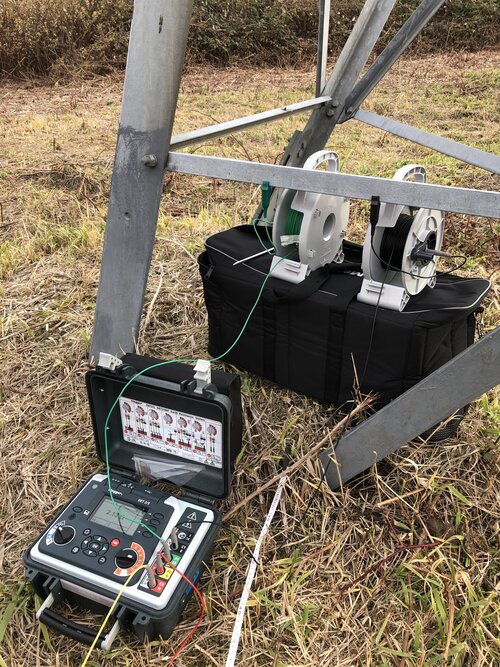Powertech Labs conducts ground resistance measurements, and facilitates grounding-related studies.
Grounding studies are performed to assess the safety of the personnel who work in close proximity of electrical systems under normal and fault conditions. Examples of this type of studies include mobile phone site installation, pipeline safety inspection, and grounding grid evaluation of transmission and distribution substations as well as generating powerhouses.
Ground resistance measurement is a core input for any kind of grounding studies which involve, including but not limited to, calculation of ground potential rise, transfer potential, step and touch potentials, induced voltage, and circuit-to-circuit separation distance.

Powertech services include the following:
- Site Inspection
- Soil Resistivity Measurement
- Fall-of-Potential (FOP) Test
- Step and Touch Potentials Measurement
- Bonding Integrity Test
- Underground Metallic Object Detection
The main purpose of a site inspection is to identify any existing and/or potential hazards, verify proper bonding of neutral connections to the ground grid and to assess the quality of the crushed rock in the substation. When inspecting hazardous situations, recommendations and/or mitigation strategies will be provided following IEEE guidelines.

Soil resistivity measurements can be conducted using either the four-point Wenner or Schlumberger methods. The data obtained via measurement will be further used to model the soil through determining soil resistivity values and thickness between the soil layers.
Fall-of-Potential tests are used to measure the overall site resistance over a long traverse. For uniform soils, the station resistance may be obtained at about 62% of total length of the measurement. The station resistance will be further used in grounding study as a validation criteria to assess the accuracy of the simulation models.
Step and Touch potentials measurement are used to determine the maximum step and touch potentials within the substation and the safe distance where these potentials are safe for the public and workers in the close vicinity of the site. Similar to the FOP test, the measured step and touch potentials can also be used to validate the grounding grid model via comparison against the calculated values and permissible step/touch potentials.
Connectivity of the substation grid components can be verified via the Bonding integrity test. Recommendations will be provided if bonding has not been performed according to the IEEE standard.
Finally, underground metallic objects such as pipelines and counterpoises are detected to account for a more accurate representation of the ground grid.

Reporting and Grid Enhancement Recommendations
A sealed final report of the study includes assumptions, findings, calculation results, conclusions, and recommendations for enhancing the grid and eliminating the existing hazards while ensuring the safety of the personnel and equipment.
Powertech engineers can develop a bill of materials for grounding construction to implement the proposed mitigation recommendations.
FOR MORE INFORMATION CONTACT:
Dr. Jorge Hollman – 604.831.5148
Senior Manager & Principal Engineer
Substations Engineering Studies
Email→


